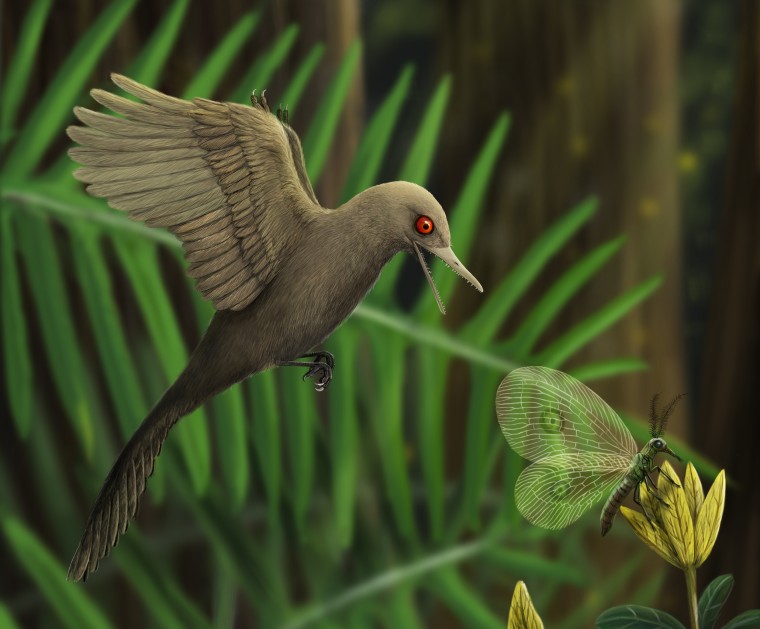A spectacular fossil skull preserved in a drop of amber is not from a tiny flying dinosaur but probably the remains of an ancient lizard, according to a retraction of the original research published in March.
As NBC News had reported, the new species – dubbed Oculudentavis, meaning “eye tooth bird” – was thought to be just a few inches long, making it the smallest dinosaur ever found.
But the questions about the research and the discovery of a similar fossil have cast doubt on its classification as a bird-like dinosaur, and the authors agreed to a retraction in late July.
“Although the description of Oculudentavis khaungraae remains accurate, a new unpublished specimen casts doubts upon our hypothesis,” the researchers wrote in the retraction in the journal Nature, which published the original research.

Lizards and snakes are a different group of reptiles than dinosaurs. Both groups evolved from amphibians more than 300 million years ago, but then diverged from each other – and although some lizards now look like dinosaurs, the closest relatives of dinosaurs living today are birds, which evolved from them directly.
Jingmai O’Connor, a paleontologist at the Chinese Academy of Sciences Institute of Vertebrate Paleontology and Paleoanthropology in Beijing and a co-author of the research, told Nature that data from new studies of the remains “definitely say that we were wrong.”
But she said the description of the new species remained accurate, and that it was still very interesting to science.
The fossil was found in 2016 in northern Myanmar, which has become a treasure trove of prehistoric animals preserved in amber – the dried resin of ancient trees.
But its classification this year as a bird-like dinosaur was questioned by other paleontologists.
Oculudentavis has several features common to lizards of that era that had never been seen in bird-like dinosaurs; details of its teeth and the structure of its skull “overwhelmingly support its squamate [lizard or snake] affinity,” according to separate research posted on the internet but not yet published in an academic journal.
Retractions are a vital part of diligent scientific research; paleontologist Andrea Cau of Italy’s University of Bologna told Nature that such reclassifications were not uncommon, especially of incomplete fossil specimens from unknown groups.